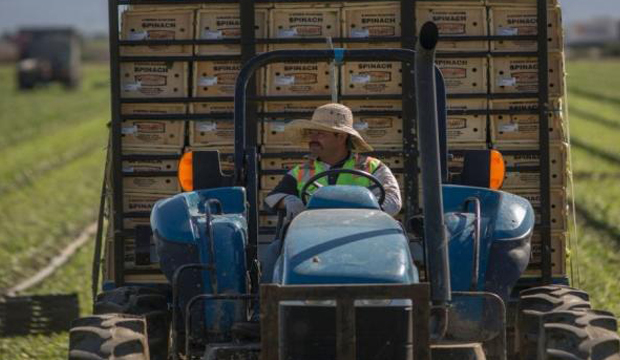In the United States, as in many prosperous nations, foreign workers play a critical role in the production of our nation’s food supply. As Congress struggles with the contentious issue of illegal immigration, it is important that legislators consider the disastrous consequence if no workers show up to grow, harvest and ship our nation’s fruits and vegetables, even if only for one season.
If our president, senators and congressmen are willing to consider the needs of American farmers — and the importance of sustaining a domestic food supply — in their deliberations over immigration policy, the strategy they develop quite possibly could end illegal immigration altogether.
During my 16-year term as a congressman representing California’s agriculturally diverse San Joaquin Valley, I sought to address the labor needs of America’s specialty crop farmers. I co-authored H.R. 3142 (2003), H.R. 884 (2005), H.R. 371 (2007), and H.R. 2414 (2009), and championed initiatives that would end illegal immigration while protecting farmers. This can happen only by strengthening border security, implementing E-verify (an electronic employment verification system), allowing foreign workers to come and go with the season, and permitting those who are otherwise law-abiding to continue their contribution in food production.
Today, as an executive for a California-based agricultural trade association (our growers, packers and shippers help produce most of our nation’s domestically grown fruits) I am again confronted with the ongoing difficulties of ensuring a stable, legal workforce in the face of our government’s failed immigration policies. The challenge remains the same for American agriculture: bring an end to illegal immigration and do no harm to our domestic food supply.
In the past, most foreign worker programs originated from the executive branch of government as treaties. Some of those treaties became legislated programs, such as H2A. In the West, the Bracero program was negotiated with Mexico to address agricultural labor needs, until its termination in the 1960s.
The border was open for migrant workers to cross to harvest crops as they ripened; generally, workers returned to Mexico when the growing season ended. However, as border enforcement increased over the years, so did the dangers and expense of crossing the border. As a result, many workers remain in the United States. Now, most agricultural labor in the western United States is unauthorized residents — estimated at 400,000 in California and 800,000 nationally.
1/17/18, Geroge Radanovich, Opinions Contributor, The Hill

